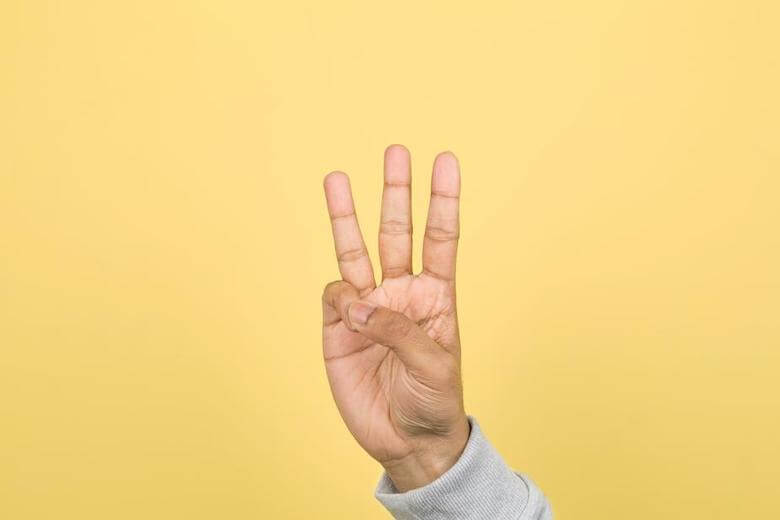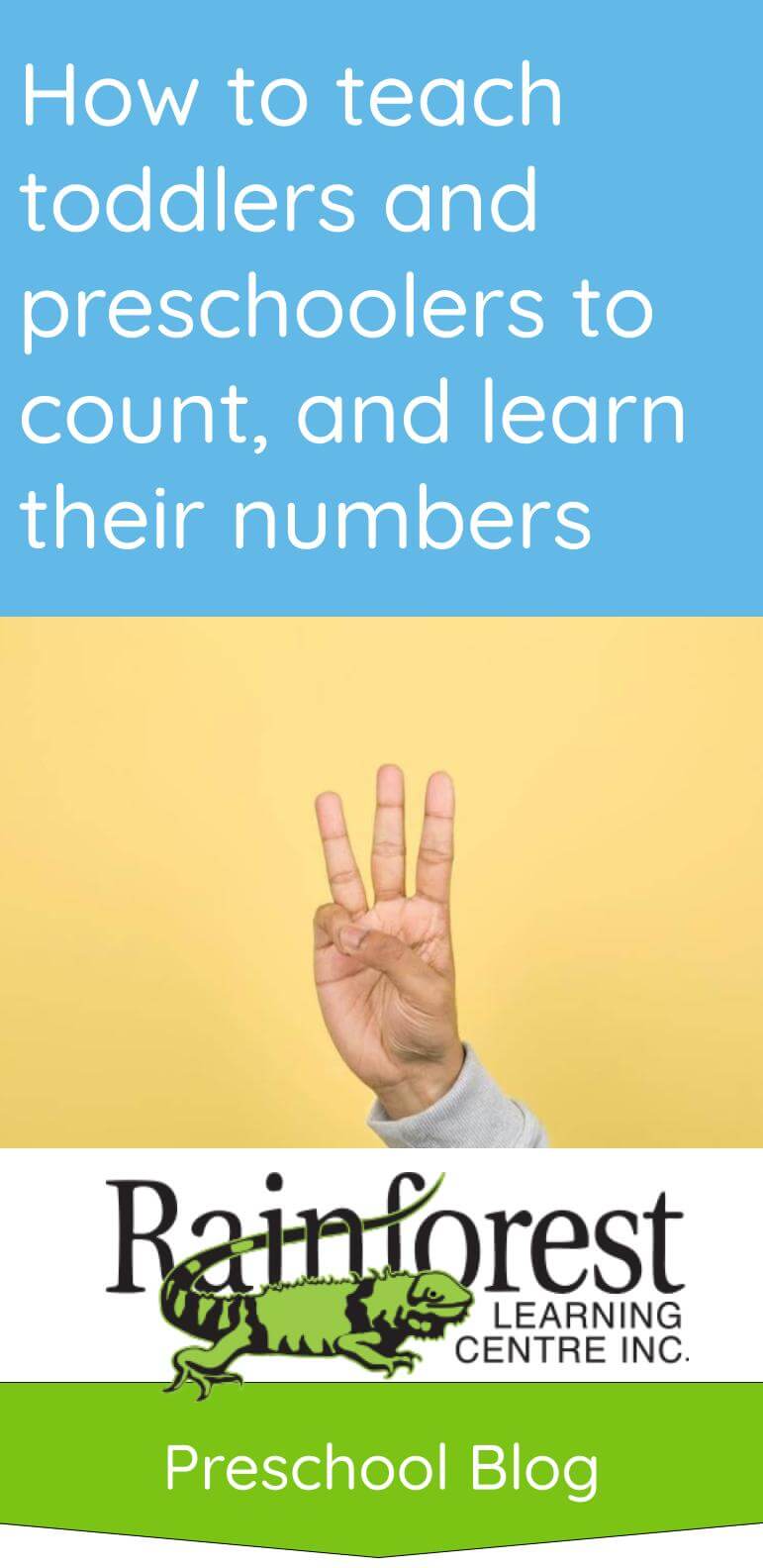
While the concept of numbers being associated with quantity can be hard to grasp at first, children are actually quite good at learning these initial math skills. They just need a little bit of help, and fun, to get them going. Eventually, the knowledge builds upon itself, much like language. So, how do we teach toddlers and preschoolers to count and learn their numbers in the first place? That’s what we’ll discuss in this article.
Teach numbers and counting with pre-number theories
The concept of quantity is all around us. Everywhere we look, one object is bigger than another object. Or, there are more peas than carrots on our plate. Some blocks are square and some are rectangular. Blocks can stack to grow a tall tower. A balloon can get bigger when more air is added to it. This is all mathematics in real life.
When a child is in the toddler stage, you can begin teaching numbers by emphasizing, verbally, that some things are big, and some are small. You can also hold up a stick and say, “it is very tall, it is bigger than this stick!”
Kids can see that obviously, there are differences between quantities and size. But putting a name to those quantities and sizes is what comes next. That takes learning concrete symbolism for numbers and counting.
Teach toddlers to count by making numbers fun to learn
In a way, we are talking about memorization techniques here. And, while flashcards with numbers on them, and dominoes with dots on them, can be helpful, we are not talking about sitting a toddler at a desk and asking them to learn by listening carefully. Children learn through play. Even better, when they can manipulate and touch objects while learning, their memory of those concepts can be strengthened. This is called kinaesthetic learning, or tactile learning.
So, how do we make counting fun for toddlers?
Play games! Sing songs about numbers! Just like we learn the alphabet song to memorize the alphabet in a fun way, we can also sing songs about counting. “One, two, buckle my shoe” and “5 little monkeys jumping on the bed” are definitely relevant here. YouTube will have plenty more songs and ways to teach numbers to children.
During story time, before bed, you can also play a simple game of ‘repeat after me.’ Ask your child to repeat the word, “one,” then “two,” then “three” and so on. Keep doing this until they learn that there is a pattern to be followed.
Next, try to switch turns saying the numbers. You say, “one,” and then pause and say, “what’s next?” At first, they may not know, because they may not have understood that this fun game is about remembering. But eventually, they’ll get the queue to say “two” after one, and “three” after two, and so on. They may also go out of sequence, but you can correct them by saying the right number, if they skip one or two.
At this point, they are learning random words through memorization. The idea that these words have to do with quantity may not sink it yet.
Start with small increments of number memorization with toddlers
And important note here: don’t expect your child to reach 10 by starting with 10 numbers to memorize. That’s too hard for a two or three year old. Instead, start with “one, two, three!” You can keep saying this as though it’s a common phrase. They may even repeat with “one, two…” and that’s ok! You can make “three” the big ‘celebratory’ number. Clap and say, “threeeeee!”
Then, you can move on to “four, five,” and so on.
Teach 2D representations of numbers to toddlers and preschoolers
What do we mean by 2D representations of numbers? This is basically writing out numbers on paper, or using flash cards. Let preschoolers see the written number 1, and understand that when you say, “one,” and they say, “one” that it is referring to that graphical character. Then likewise with 2, 3, 4 and so on.
You can also draw dots next to the numbers, or use dominoes or dice, to show children that numbers also relate to quantity.
You’ll notice children’s counting books use this same method. Except, instead of dots, they’ll show pictures of say, two apples, three flowers, four friends, and so on. This also helps children with language development, vocabulary, and the association between quantity and numbers.
Read these types of early learning books to children every day. In a gamified and storyful way, you can ingrain the thought that printed numerals, verbal words and quantities of objects are all related to each other.
The human mind is amazing. You won’t need to do much explaining of how this works. Children will pick up patterns, and learn to repeat, until they ‘get it’ by ‘doing.’ Just remember to make it fun, so they’ll want to!
Mix up sequences and patterns to teach individual numbers to preschoolers
When a child has a grasp on numbers, and is fairly confident about saying them in order (typically up to 10), you can start with a few ‘tricks.’ There are plenty of workbooks and worksheets to help with this. They will display a set of numbers in random order. Ask your preschooler, “where is number seven?” You can help them search the page, or point to the wrong one and say, “is that number seven?” If they say, “yes,” you say, “nooooo” like it’s a silly game. Then ask again by pointing to another, “is that number seven?” and repeat until they get it right. When they get it right, you give them a, “yaaaay! Good job!” and a high five.
Come back to this activity as they learn to counter higher and higher.
Constantly count physical objects with children to teach numbers
Finally, when you’re with your toddler, like with all lessons, try to apply them in real life. When playing with blocks, stack them and count, while pointing, “one, two! That’s two blocks!” When you cut up little banana pieces for a toddler, show them their plate and count the pieces (obviously don’t count higher than they’re able to understand). You can say, “there are three pieces left! One, two, three” and point while you count them.
You can do this by lining up pebbles in the park, or by counting shoes when putting them on, and so on. Make counting part of their thought process, so they begin to recognize quantity. They should be able to understand beyond just ‘more’ and ‘less’ or ‘big’ and ‘small,’ and so on.
To conclude: teach toddlers and preschoolers to count by actively bringing numbers into their lives
Children can learn to count at around age 2. Of course, some cases will always be different (either earlier or later). But to gauge a good age at which to start introducing numbers, you can start when they are toddlers. Don’t expect to make big strides at first, of course. They’re still taking in a lot at that age. Letters, numbers, objects, words, sounds, sensations – they’re absorbing it all, and rapidly, too.
But by making numbers part of the ‘norm’ in their lives, such as by playing, singing or pointing out quantities, you can teach counting in early childhood fairly easily. That way, by the time they enter preschool or kindergarten, children can have a base to built upon more advanced math skills.
For more on teaching young children how to count, see these resources (we’ve used some of them to inform this article):
- https://en.wikipedia.org/wiki/Kinesthetic_learning
- https://www.wikihow.com/Introduce-Numbers-to-Kindergartners
- https://www.themeasuredmom.com/counting-books/
- https://www.parentingscience.com/preschool-number-activities.html
- https://www.parentingscience.com/preschool-math-lessons.html
- https://www.allkidsnetwork.com/preschool/teach-numbers.asp
- https://sciencing.com/use-montessori-methods-teach-counting-4530551.html
- https://www.scholastic.com/teachers/articles/teaching-content/early-math-how-children-learn-about-numbers/
Plus, see related posts on our blog:
- How to teach colours to toddlers and preschoolers
- 5 Easy ways to teach the alphabet to preschoolers
- 5 Simple ways to teach preschoolers phonics basics
- How to teach digraphs to preschool children (6 ways)
- 8 Ideas to teach preschoolers about money management and why it’s important
- Ideas for teaching shapes in preschool and daycare
